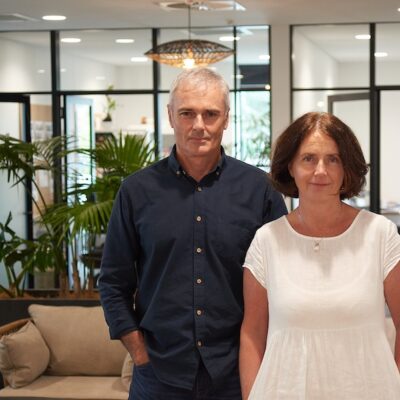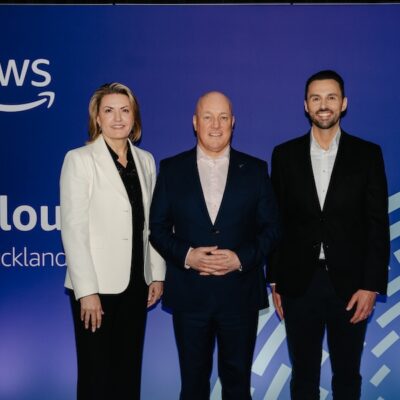Stormy festive trading conditions predicted for businesses
Rising costs and cost-conscious consumers are leading to cautious revenue predictions and low confidence levels amongst SMEs this Christmas, according to the latest MYOB SME Holiday Trading Snapshot. In the […]
Rising costs and cost-conscious consumers are leading to cautious revenue predictions and low confidence levels amongst SMEs this Christmas, according to the latest MYOB SME Holiday Trading Snapshot.
In the survey of over 500 local business owners and decision-makers nationwide, just 18% of SMEs surveyed expect their revenue from the upcoming holiday season to be up on last year’s performance, while more than half (55%) expect their revenue from the Christmas and New Year period to be on par with last year.
Concerningly, more than 1-in-5 (22%) expect their revenue to be down and despite the end of COVID-19 restrictions, nearly two thirds (62%) of New Zealand’s SMEs are not expecting an increase in demand or sales over Christmas or New Year following the removal of these restrictions.
Safeguarding business performance where possible, New Zealand’s SMEs are taking a range of actions to minimise the impact of supply chain disruption as they prepare for the festive holiday trading period.
Just over 1-in-5 of those surveyed have ordered stock early, while 17% have ordered additional stock, the same proportion (17%) are encouraging their customers to buy earlier, and 14% have communicated with their customers about possible limitations to supply or longer delivery times.
MYOB spokesperson – Jo Tozer, says a strong performance this holiday trading period will be crucial for many New Zealand businesses.
“Our insights show that one-in-five operators see the festive holiday period as being very important to their business’s annual revenue, and while COVID restrictions are no more, local SMEs find themselves faced with other economic challenges this festive season.”
“From higher operating costs and consumers watching their wallets more closely as inflation and the cost of living continues to pinch, this Christmas will be tough for many business owners. This is particularly why more than two-thirds of SMEs are doing what they can to head off any potential impact to their performance and revenue over this time from potential supply chain disruption.”
Consumers becoming more cost conscious
Consumer spending behaviour is also contributing to SMEs’ expectations around the festive holiday period, with changes to buyers’ budgeting and shopping approach becoming more evident to around 7-in-10 SMEs as inflation and the cost of living has increased.
Of the changes they’ve observed recently, 43% of businesses polled said customers seem to be more cost conscious, while 29% said customers appear to be buying less, just over one-in-five (22%) believe customers are more attracted by sales and discounts, and 21% said they have noticed more customers are shopping around or comparison shopping for the best prices (21%).
“We saw in our recent MYOB Consumer Snapshot that the rising cost of living has made an impact on Kiwis’ Christmas plans, with 30% planning to spend less on gifts than they usually would, and 30% expecting to spend less on dining out over the festive season, while others are cutting back on how much they want to spend on goods like food and drink,” explains Jo.
“It’s evident from our latest SME insights that businesses are seeing and feeling these changes to consumers’ spending plans as more New Zealanders’ tighten their purse strings. Unfortunately, it’s coming at a time when many SMEs would have been hoping for a boost to their bottom line.”
Expectations for the year ahead
There’s also little optimism coming through from local businesses looking beyond the festive season, with the latest SME Snapshot insights showing that most SMEs expect to see the economy decline in 2023.
Sixty-one percent of SME owners and operators surveyed believe the New Zealand economy will decline in the next 12 months, including more than a quarter (27%) who expect that decline to be significant. In comparison, just 23% believe the economy will improve.
In terms of what’s having the biggest impact on SMEs’ confidence, 62% of those surveyed said the cost of living, while 54% blame the level of inflation and 40% cited rising interest rates as influencing their view of the economy for the year ahead.
“Given the very real challenges small business operators are facing currently, it’s understandable that many are taking a ‘glass half empty’ view of the economy at the moment,” says Jo.
“On top of inflation and the cost of living, the shortage of skilled employees, supply chain disruption, government spending, and consumer confidence are also other factors that some SMEs have told us are on their mind as they consider what lies ahead over the next 12 months.”
Revenue battles for local SMEs
When it comes to business performance compared to a year ago, more than a third (34%) of SMEs report their revenue for 2022 is down, while 39% said their revenue is the same as it was this time last year.
As SMEs look to make every dollar count, the pricing of their goods and services is firmly on the radar. The majority of small business decision makers (56%) surveyed plan to increase their prices over the next six months.
In terms of what’s driving this action, those increasing their prices cited inflation (70%), increased operating costs (54%), increased supply costs (45%), and increased production costs (44%) as the top reasons.
“We are heading into something of a perfect storm at the moment, and with SMEs unable to rely on a traditional festive trading boost as a buffer for their finances, a focus on the fundamentals will be key,” says Jo Tozer.
“That includes keeping a close eye on costs – particularly if the business carries stock or has large orders in progress, being aware of payment times from key customers and communicating early if these start to blow out, and making sure cashflow levels are enough to cover the ongoing costs of the business,” she adds.
“We’d also encourage business owners to have a talk to their financial advisor as they plan for the year ahead, and perhaps scenario test a few possible options for the economy and how their business can manage any sudden changes in demand, further increases in costs or extensions of payment times.”






